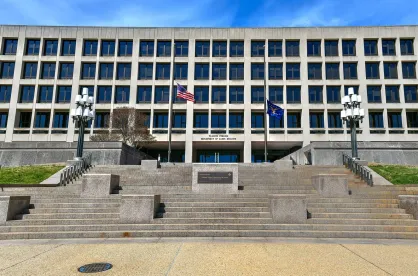During what has already proven to be a very busy month for federal labor law, the U.S. Department of Labor (“DOL”) is poised to implement yet another pivotal change. On August 8, 2023, DOL announced it will soon publish a rule that, among other things, changes the prevailing wage calculation for federally-funded construction projects—a decision that departs from 40 years of precedent. The new rule goes into effect 60 days after it is formally published in the federal Register.
Background
All federally-funded construction projects are governed by the Davis-Bacon Act, which was passed by Congress in 1931. The Davis-Bacon Act requires contractors and subcontractors working on federally-funded construction projects to pay their workers the same prevailing wages as provided to similarly-situated workers in the relevant geographic area. DOL’s Wage and Hour Division collects and analyzes wages across classifications of workers in a given area and, from that data, determines the prevailing wage for each classification. Where a majority of workers in a certain classification are not paid a single prevailing wage, DOL establishes calculations that can be used to set the prevailing wage for that given group.
Changes to Calculation of Prevailing Wages in DOL’s Proposed Rule
Since 1983, DOL has used the “weighted average” calculation to determine the prevailing wage where a majority of workers in a classification are not paid a single prevailing wage. The weighted average calculation takes the total amount of wages from all individuals in the classification and divides that amount by the number of workers in that classification. The resulting average becomes the prevailing wage.
DOL’s proposed rule seeks to revert to a calculation methodology that was first implemented in 1935—known as the “30% rule.” The 30% rule calculates the prevailing wage based on the wage that is paid to at least 30% of workers in the classification for the geographic region. In a recent statement, the White House explained that the weighted average rule tended to “pull down the prevailing wage if some employers pay very little” and the 30% rule “makes it more likely that workers are paid a true prevailing wage.”
Additional Changes: Recordkeeping, Survey Processes, Enforcement
DOL’s new rule also includes some additional changes, including new processes for surveying outdated wage rates and stringent recordkeeping requirements forcing, requiring employers to maintain payroll records, employee phone numbers and email addresses for at least three years after work is completed.
The new proposed rule also increases DOL’s ability to enforce payment to employees who have lost wages due to retaliation-based termination or discipline. The proposed rule not only expands existing liability-assumption requirements, making contractors responsible for the compliance of their subcontractors regardless of intent, but also imposes a new requirement on “upper-tier” subcontractors to pay back wages due from “lower-tier” subcontractors, if they acted with knowledge or recklessness in violating the law.
Takeaways
With respect to the proposed change to the methodology of prevailing wage calculations, while this may appear to be a mere technical adjustment, it likely will have dramatic effects on the construction industry. According to the White House, this paradigm shift will put “thousands of extra dollars per year” in the pockets of “one million construction workers”—a result that will require contractors and subcontractors to pay a significantly greater price for labor.
Additionally, by focusing on only 30% of the relevant market, this new rule could have the effect of favoring certain wage rates while ignoring the remaining 70% of the market that may be paid less.
Finally, while DOL’s new rule does not impact the methodology of prevailing wage calculations under state and city prevailing wage laws, it is uncertain whether this dramatic change in federal methodology will influence states and localities.




 />i
/>i
